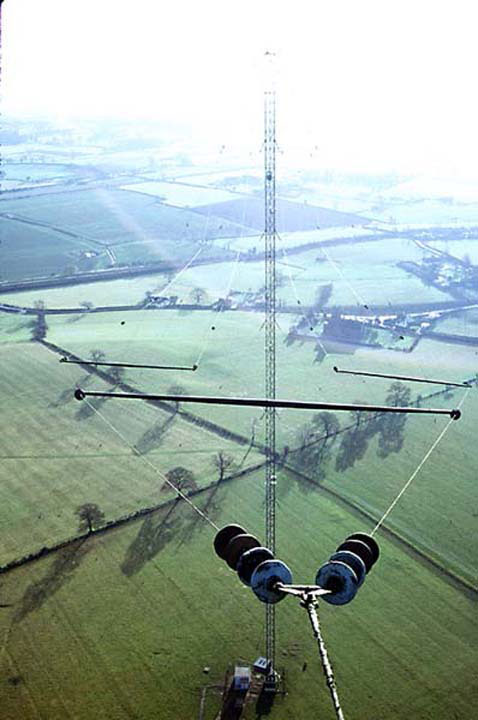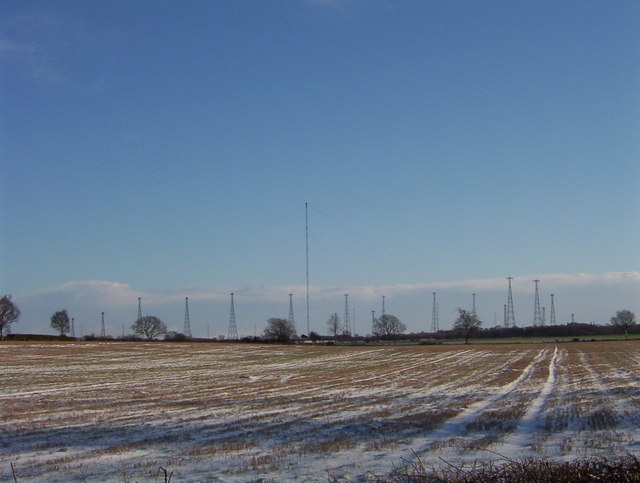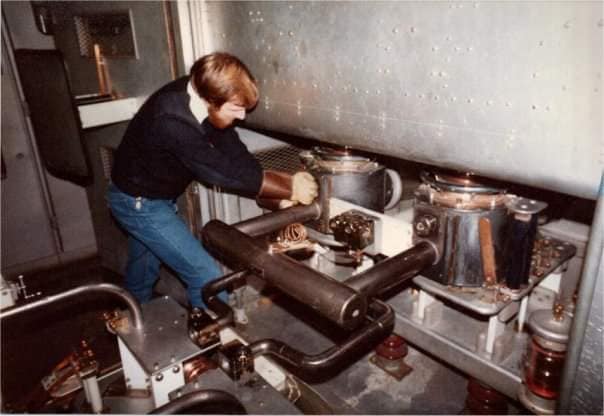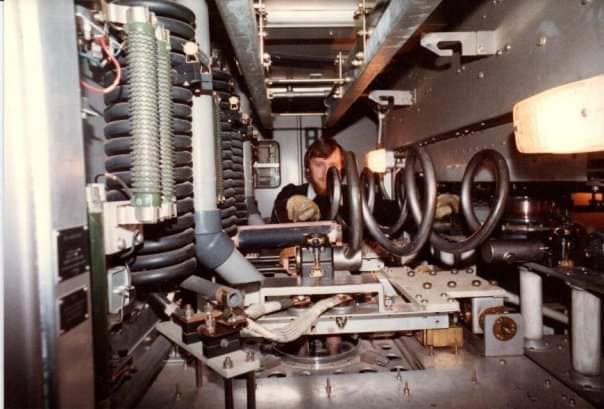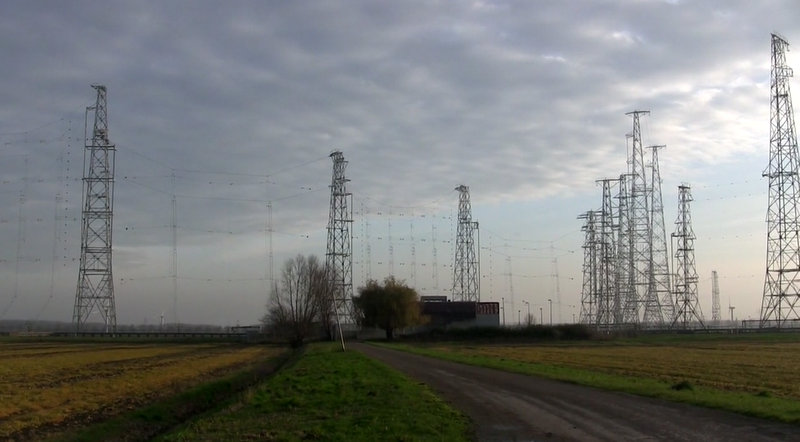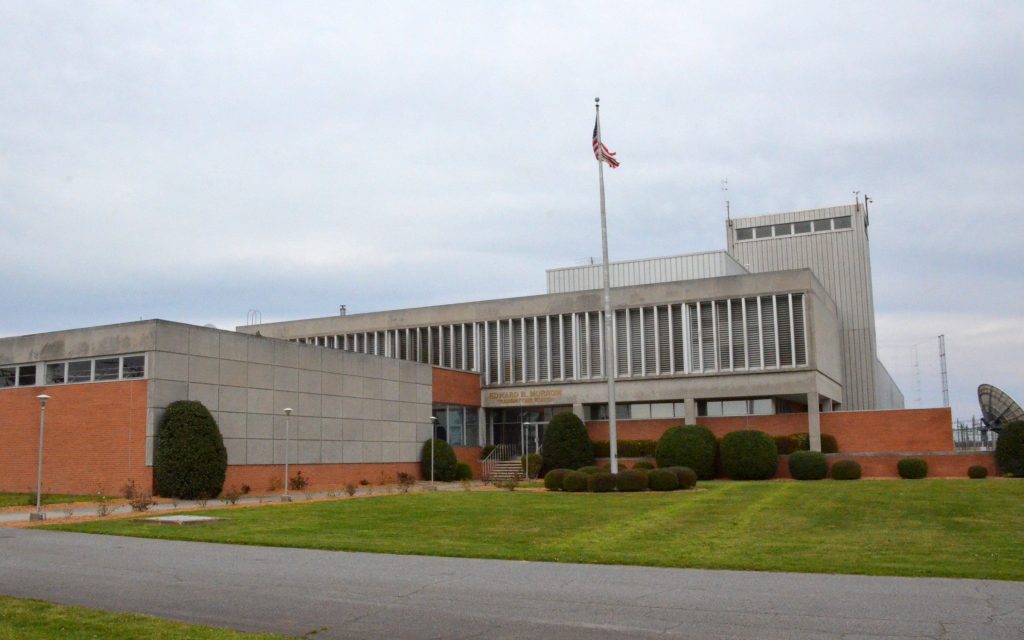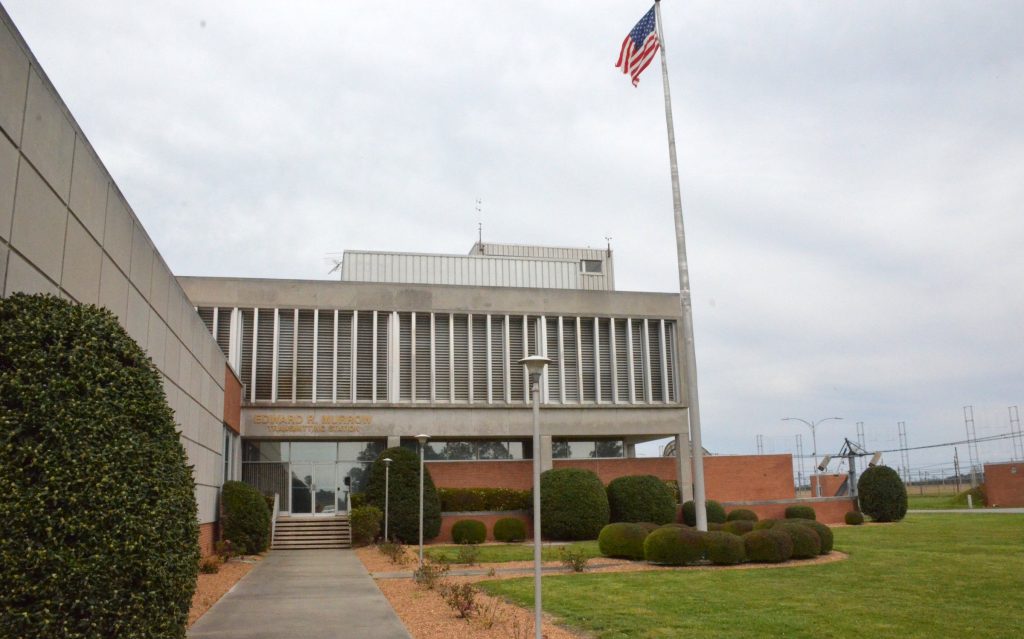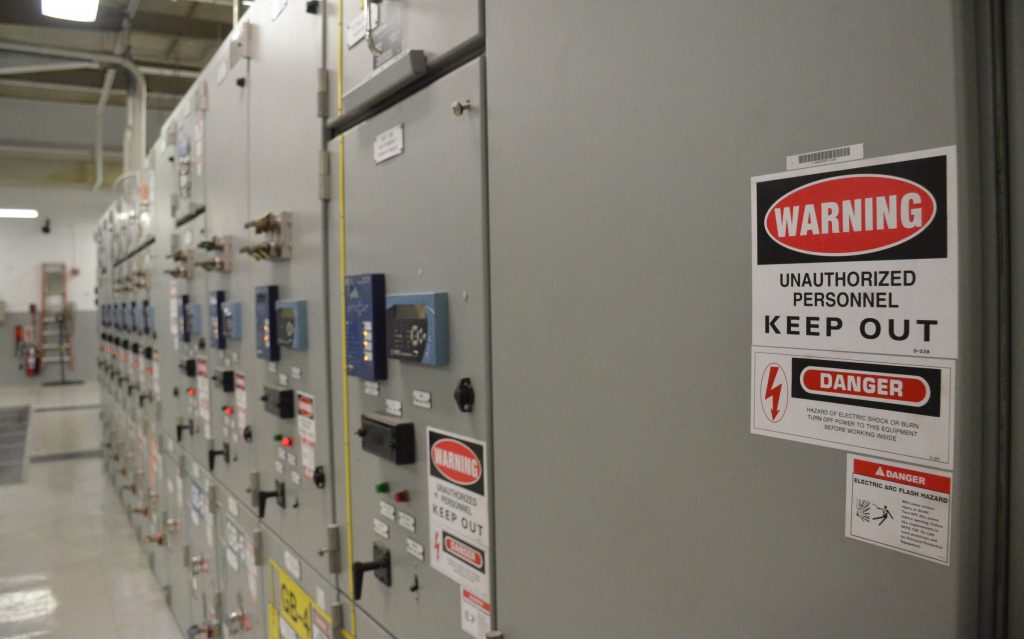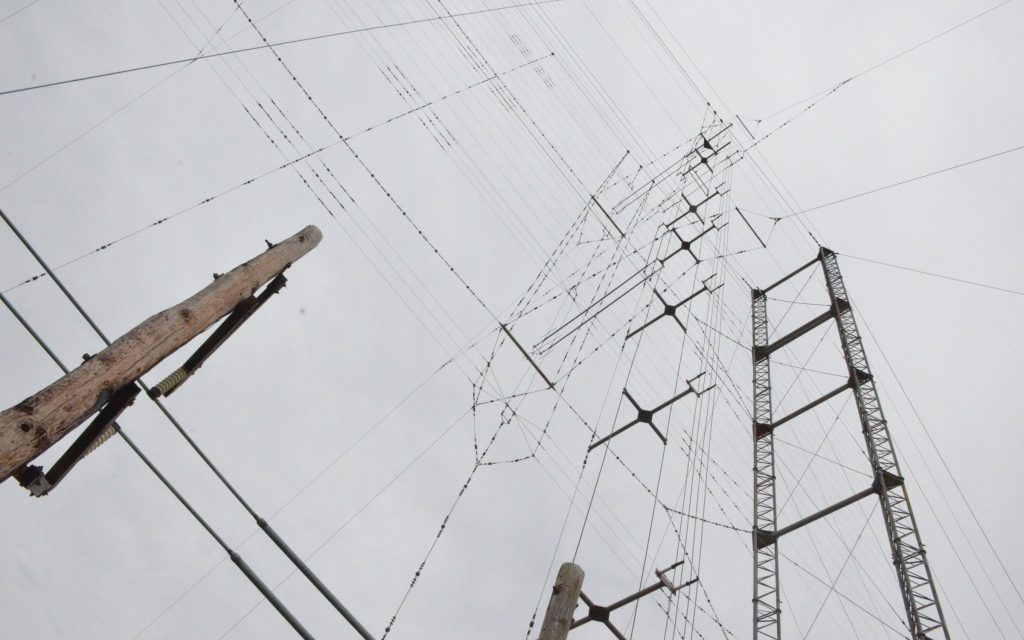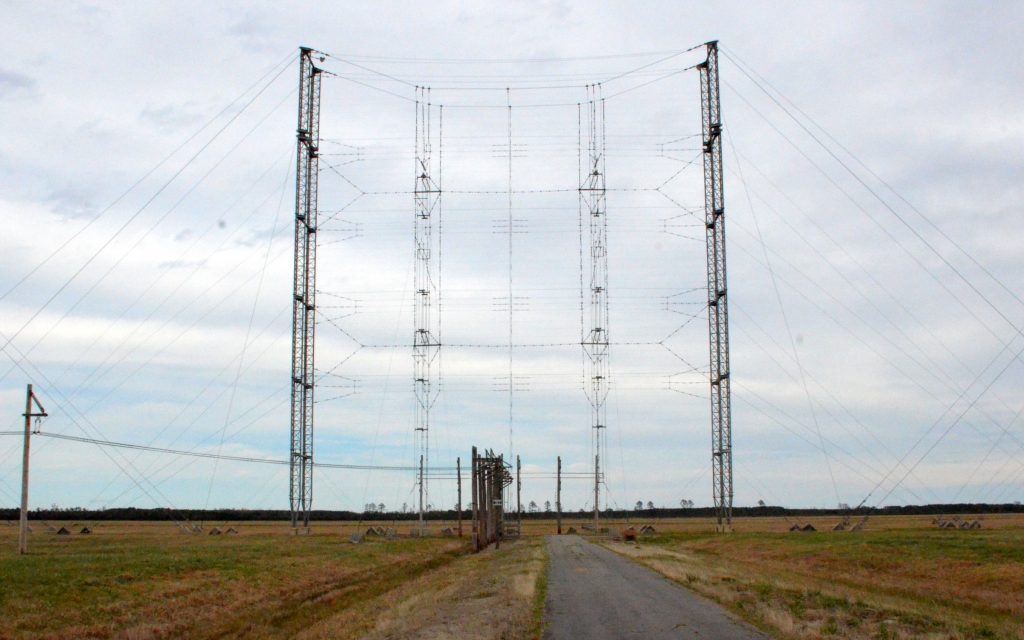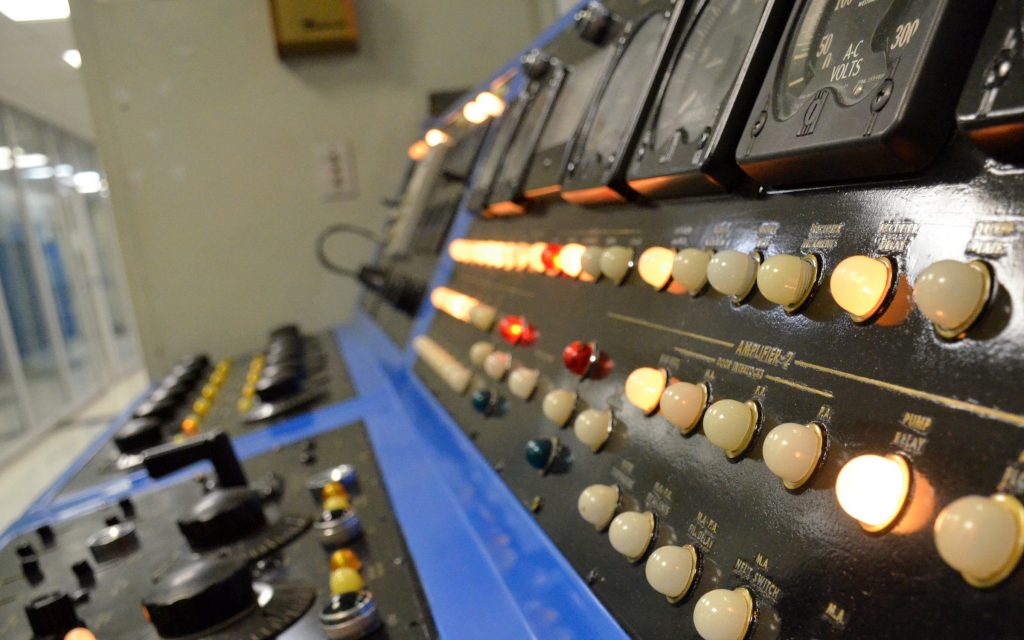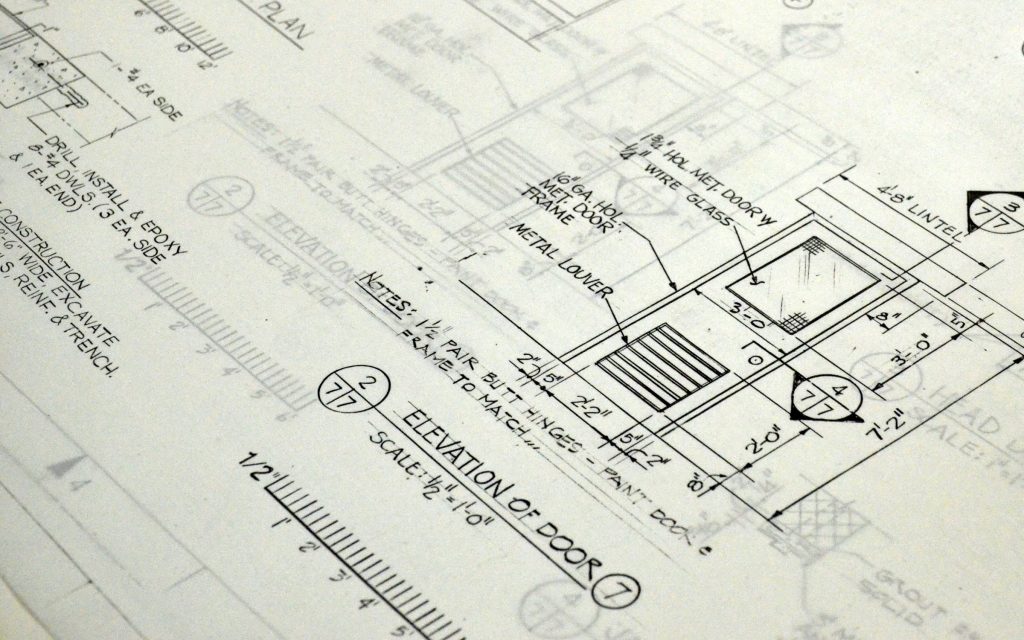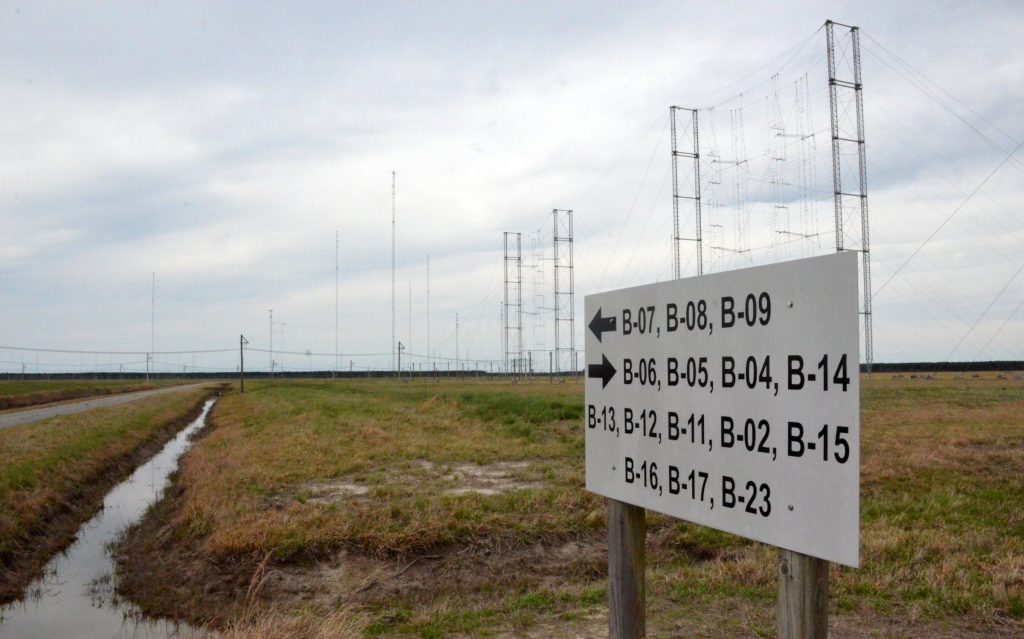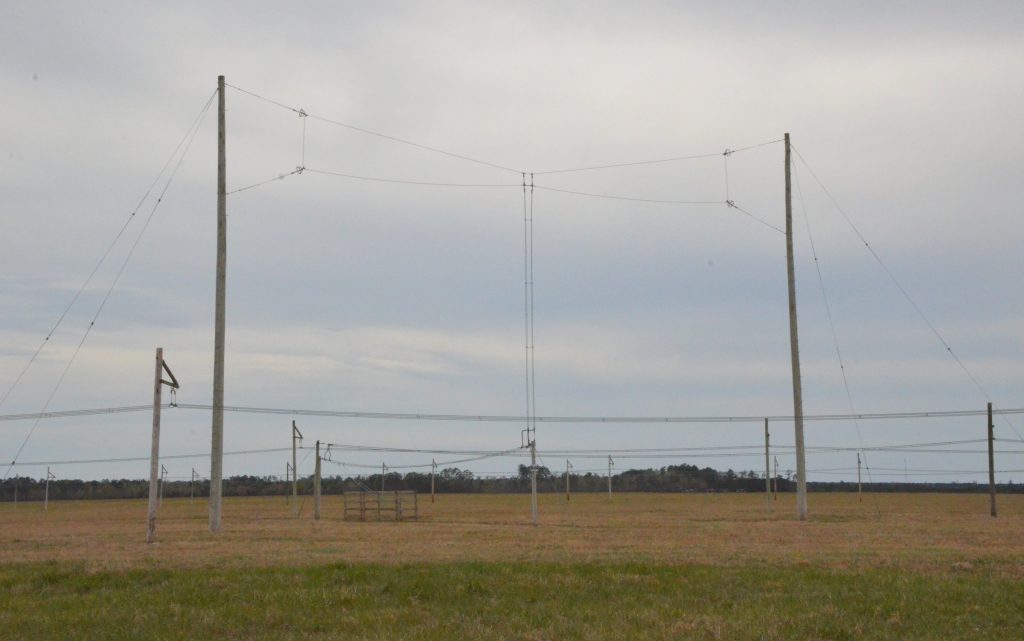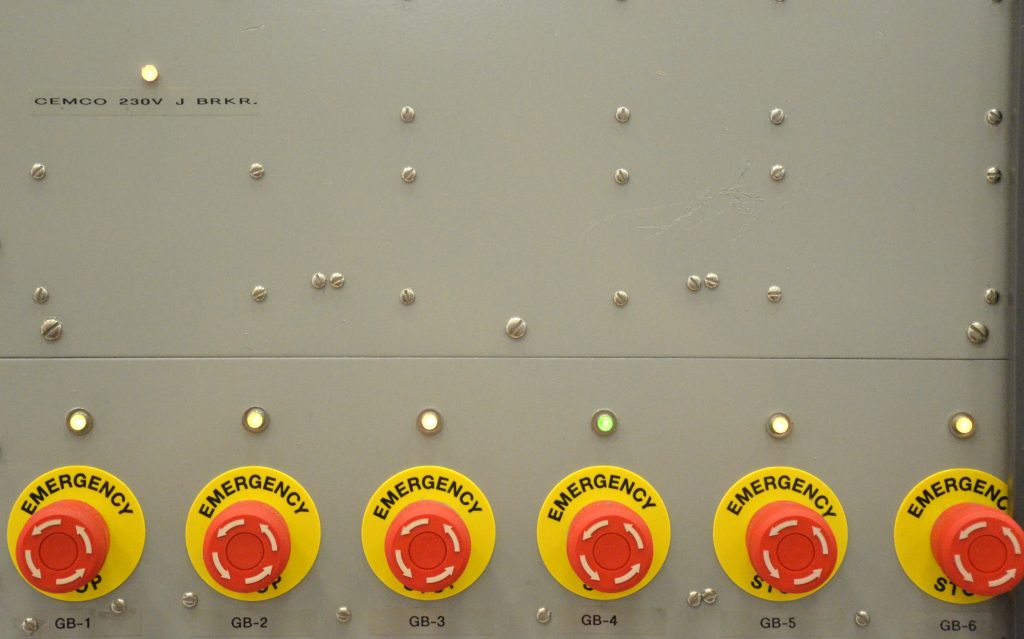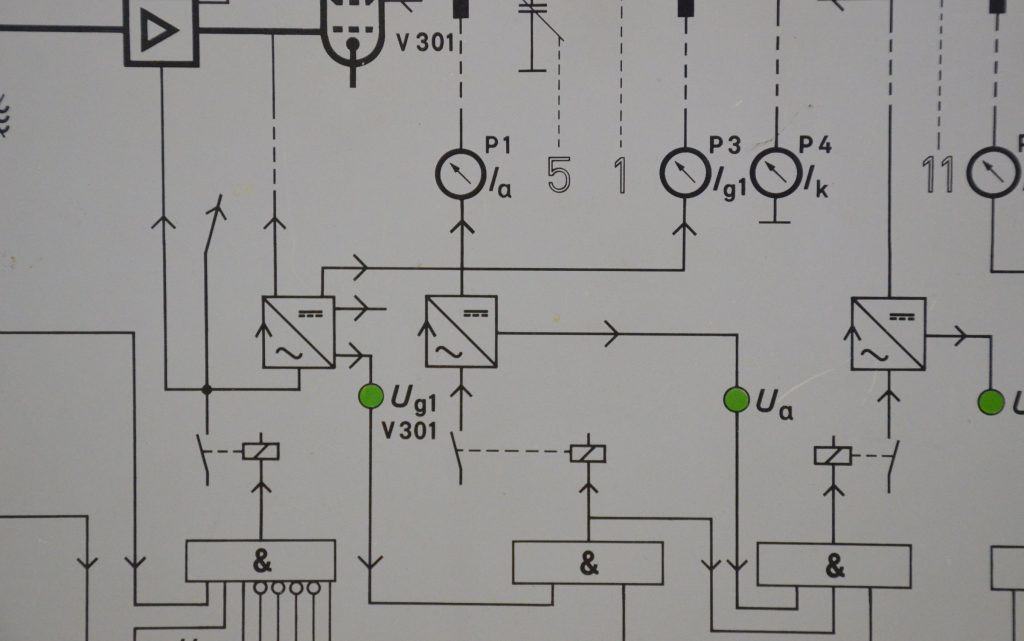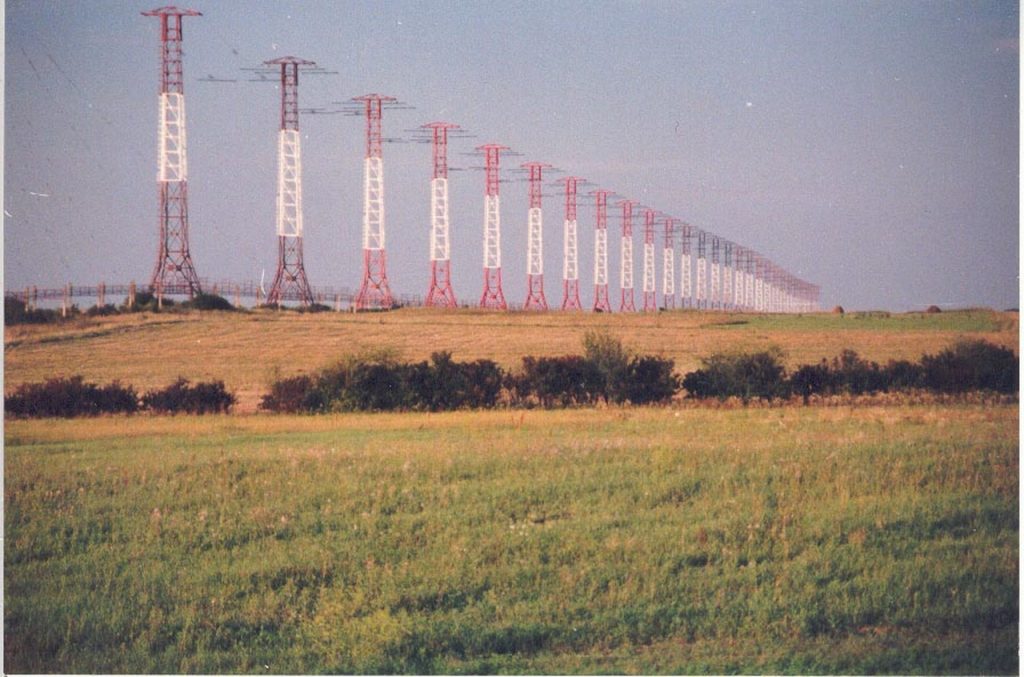
The mystery array
Many thanks to SWLing Post contributor, Rick Slobodian, who seeks help solving a 22 year old mystery. Rick writes:
[Perhaps you can help me] explain this antenna….a 22 year old mystery antenna (see photo above)? What sort of antenna is this and how does it work? It’s at 49.8994 N 24.685 E near Krasne, Ukraine.
I was at this transmitter site in 1998.
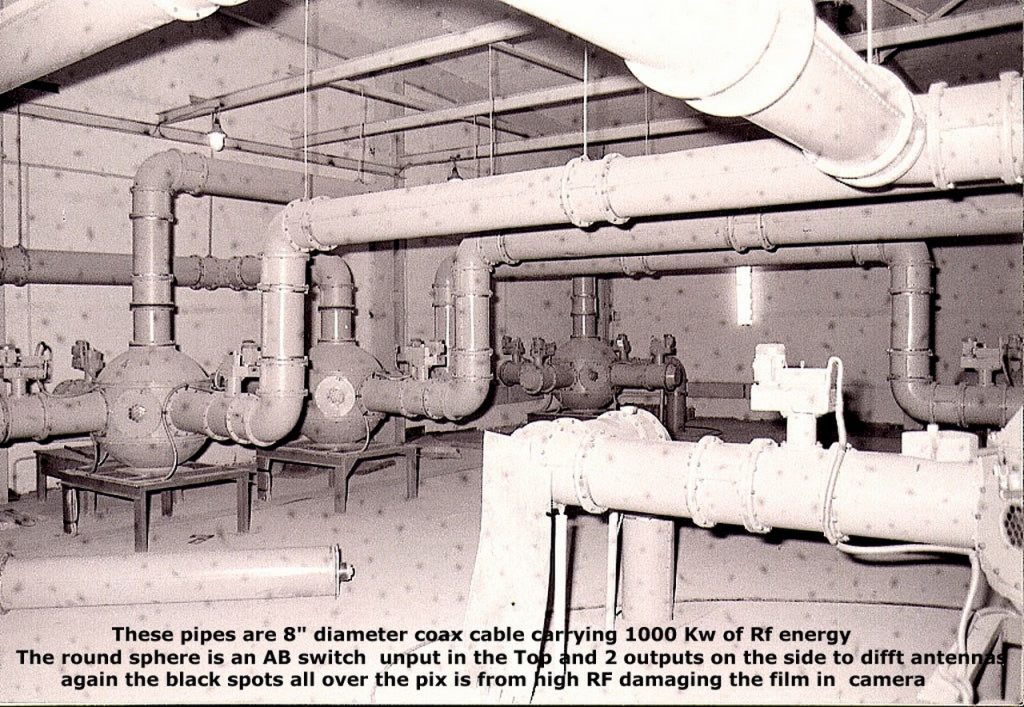
Antenna switch room
I was writing articles for a number of magazines hoping to find customers for airtime and to make this site viable.
I spent all day at the site wrote extensively about EVERYTHING ELSE: the shortwave transmitters, the longwave transmitters, the shortwave antennas, the vertical long wave antennas, and the vertical MW antennas.
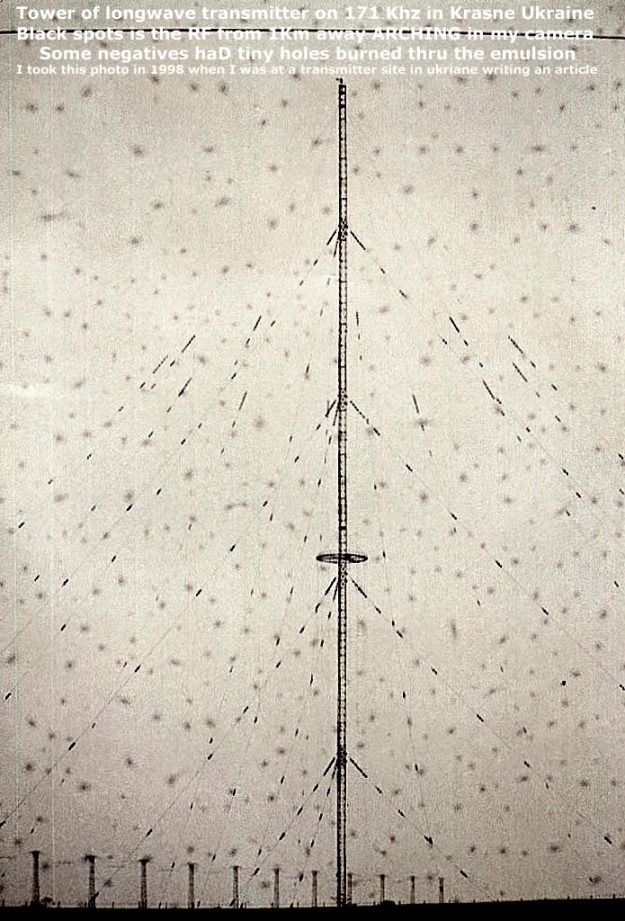
Longwave antenna at Krasne
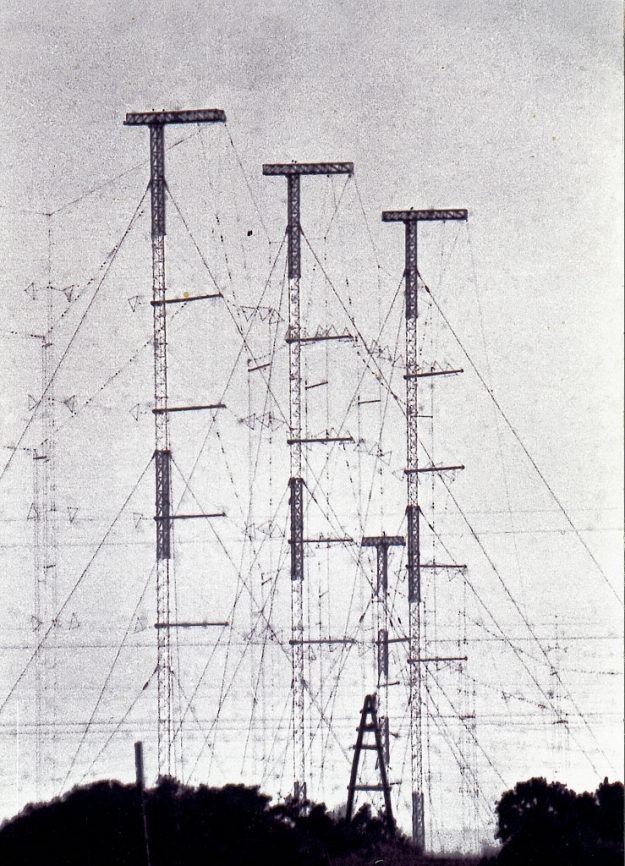
HRS curtain array at Krasne
The transmitters were behemoths: Komintern Burans 500Kw 1000 Kw 1200 Kw
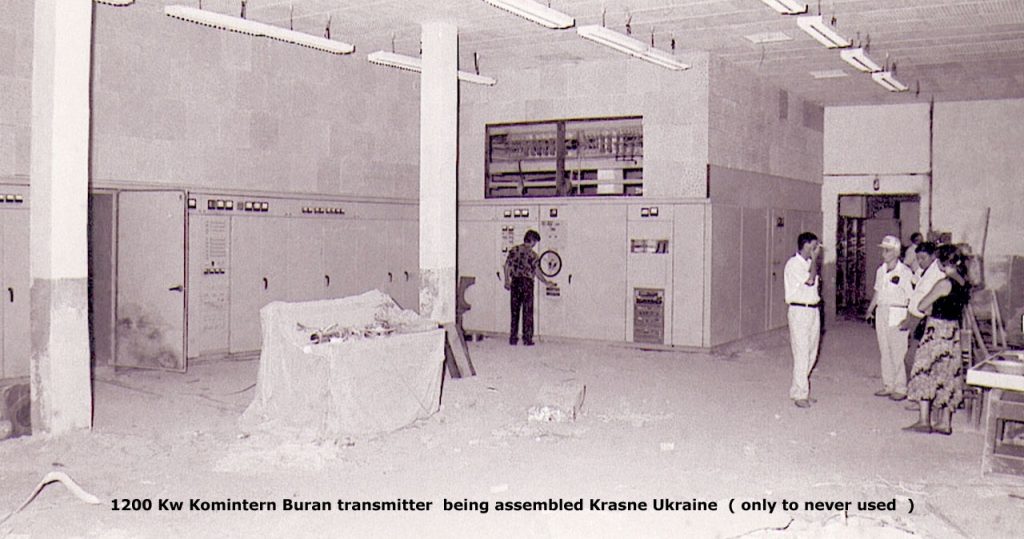
New 1200 Kw transmitter under construction
This antenna was over a km form the main building and they would let me go there:

I took this photo of the array as I traveled past it by train.
Its 36 towers strung in a NE SE line–over 2 km long and each tower is approximately 40 m tall.
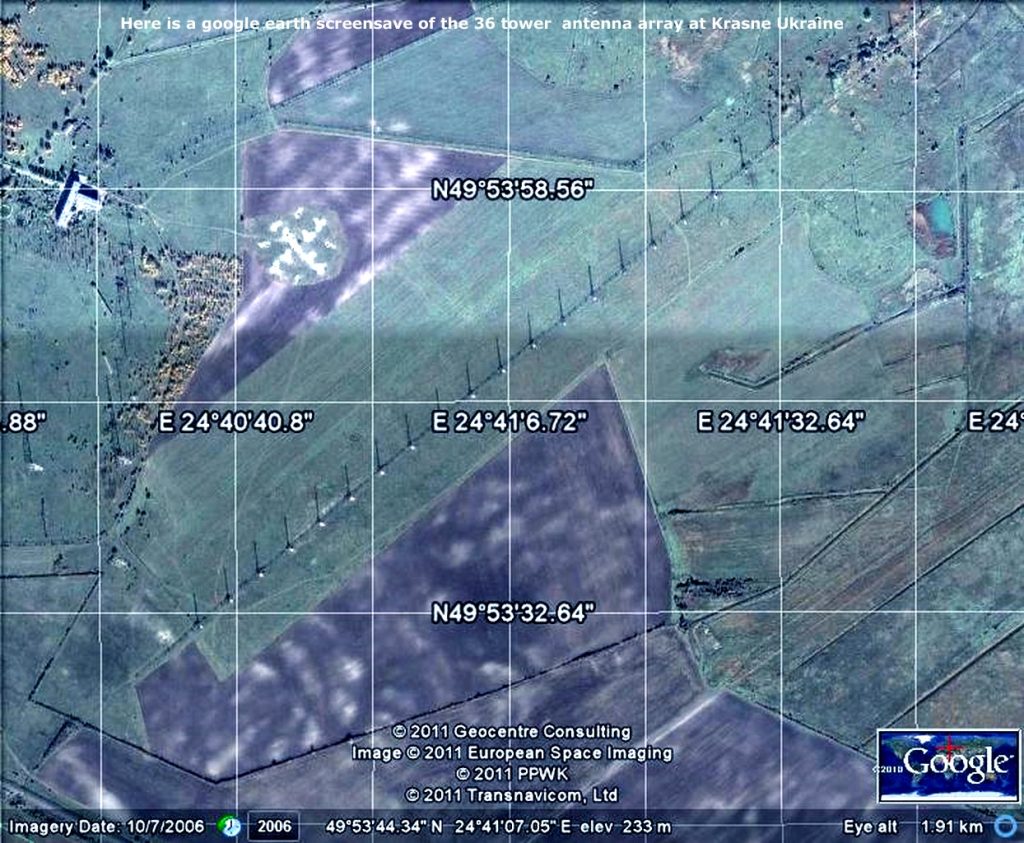
[My hosts] were they so evasive about this antenna array yet not the rest of the site.
[There are some peculiarities:]
- Do you see a feed line running along the bottom of the towers near the ground?
- I do not see any tuning shacks.
- Is it fed from one end or the other end or is each tower fed?
- If each tower is fed, then where are the tuning shacks/phasors?
- iIf it is a beverage then why so may towers and such close spacing?
- Is it something completely different?
What do you think it is? How do you think it works and what would be its purpose?
Thanks for sharing, Rick! My hope is that one of the members of the Post community may be able to shed a little light on this interesting antenna array. Please comment!
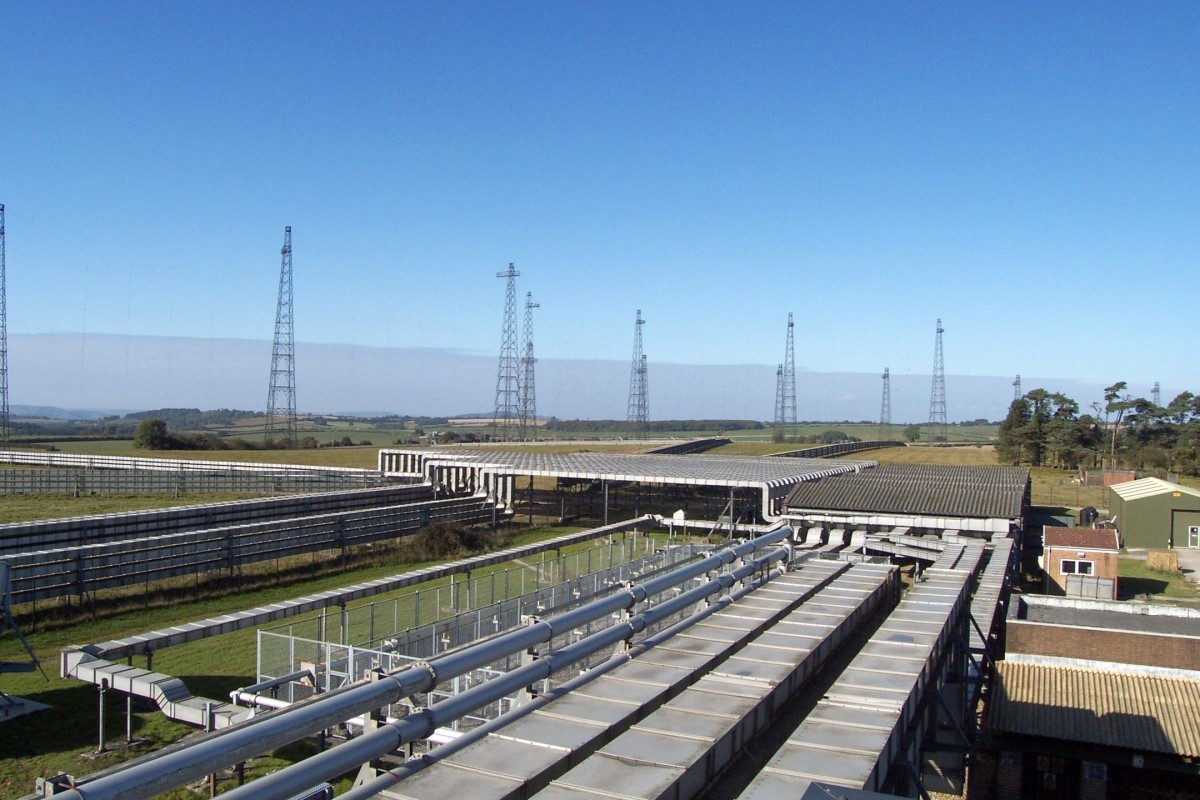 Many thanks to SWLing Post contributor, Dave Porter, who shares a link to the following site which contains an extensive galley of photos taken at the Rampisham HF transmitting site on October 11, 2003.
Many thanks to SWLing Post contributor, Dave Porter, who shares a link to the following site which contains an extensive galley of photos taken at the Rampisham HF transmitting site on October 11, 2003.
